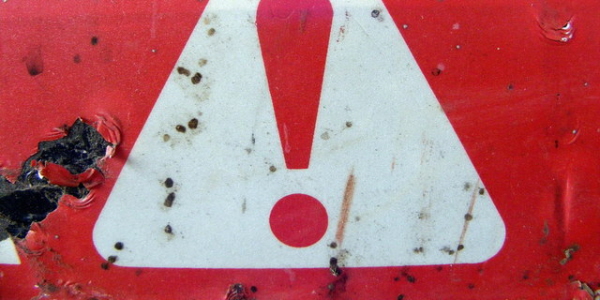Editor’s Note: Today is your last chance to download Ardent Partners’ The State of Strategic Sourcing 2015: The Four Pillars of Sourcing Success report. Interested readers can download this exciting and informative annual research report by clicking here. We hope you enjoyed the report, but it is no longer available for download from Ardent Partners.
Every year, the pace of business continues to accelerate, forcing enterprise sourcing teams to adapt to changes and shifts within global markets in order to stay competitive. Although workloads and responsibilities continue to increase, sourcing teams remain understaffed with little relief in sight. As a result, collaboration, early engagement, process linkage, and automation have become valuable force multipliers to help extend a sourcing team’s impact throughout the enterprise, even as it remains stretched to its limits. This article, based on the responses from more than 300 sourcing and procurement professionals, examines some of the themes that were not covered in The State of Strategic Sourcing 2015 report, but are still insightful and worthy of discussion. These will include further analysis of some Best-in-Class capabilities and associated performance metrics. If you love “deep cuts,” then this article is for you!
Today’s article is on how Best-in-Class supply risk management capabilities correlate with superior procurement and enterprise performance.
Supply Risk Management
Chief Procurement Officers (CPOs) and other supply management leaders have increasingly taken on the task of managing supply risk on behalf of their organization. In fact, recent Ardent Partners research has shown that in the last five years, 59% of them have assumed the responsibility of managing supply risk across the enterprise (if they were not already responsible). This expansion is in keeping with the overall trend of CPOs and supply management leaders converging with traditionally-siloed departments, like AP/Finance, HR, Legal, Operations, Product Development, and so on. However, what differentiates supply risk management from other areas of responsibility is that, as a process, it is often not well defined, delineated, delegated, and implemented; which is to say that it is often not standardized.
As a refresher, supply risk management is the process of identifying, prioritizing, monitoring, and mitigating risks to an organization’s supply chain. The risks seem to increase every year, but generally they include business continuity, financial, operational, political, reputational, or regulatory risks. Because they are multi-dimensional and extend well beyond the four walls of procurement into the marketplace, CPOs and other supply management leaders need to collaborate and innovate across and outside of the enterprise in order to effectively monitor and manage all of the supply risks in the modern business environment. Some best practices for doing this include:
- Clearly defining metrics for supply risk and performance
- Centralizing supplier information in a centralized system or database
- Clearly defining ownership for managing supply risk
- Adopting technology systems to measure supplier performance, capabilities, and other key data
- Using third-party information services to monitor and assess supply risk
Unfortunately, standardization of supply risk management programs is low for procurement teams of all maturity classes. Ardent Partners’ most recent strategic sourcing research study found that 38% of Best-in-Class procurement teams have standardized their supply risk management programs, compared to just 7% of all other teams. Granted, these are low numbers; however, the Best-in-Class are still more than four times as likely as All Others to have a standardized supply risk management program, which can significantly benefit the enterprise.
Although it is difficult to quantify the value of avoiding or mitigating supply risks to the enterprise, standardizing supply risk management processes and programs by Best-in-Class procurement teams correlate with higher performance against several key metrics. Specifically, the Best-in-Class report:
- 71% spend under management, compared to 48% of All Others – a 49% difference
- 10% savings identified for 2015, compared to 4% of All Others – a 145% difference
- 11% savings realized in 2014, compared to 3% of All Others – a 257% difference
Put simply, greater standardization of enterprise-wide supply risk management programs correlates with greater ability to pull more spend under the influence and management of procurement, and to identify and realize greater savings across the enterprise. Although correlation does not imply causation, it is not hard to follow the logic trail here: enterprises that identify, quantify, and manage supply/supplier risks early in the sourcing process are likely to rebound quicker, preserve more savings, and ultimately drive more value. Consider the following:
- End-users not leveraging existing contracts with existing suppliers to purchase goods and services;
- A supplier trying to renegotiate the contract after it has been signed, or upsell the organization for goods and services that were already negotiated;
- Or commodity price volatility within the market.
Early discovery and intervention in all of these cases can lead to a more favorable outcome (e.g., lower costs, increased savings, business continuity) than if the sourcing team allowed the risk to continue unmitigated, growing in its impact to the organization.
Final Thoughts
Managing supply risk is an ongoing process – in effect, a moving target. CPOs and supply management leaders cannot “set it and forget it” like they can with other repeatable and scalable processes. They need to recruit internal and external partners, identify and understand risks from their vantage points, prioritize them, delineate/delegate responsibility, and practice real-world scenarios. In effect, they need to have a standardized process in place for managing and or avoiding supply risks. Failing to do so can result in diminished enterprise-wide performance or worse. But effective standardization and mitigation can protect the organization’s bottom line and help procurement deliver (or return) more value to the enterprise. After all, “an ounce of prevention beats a pound of cure.”
RELATED ARTICLES
Research Preview: The State of Strategic Sourcing – Best-in-Class Performance
Research Preview: The State of Strategic Sourcing – Supplier Management
Research Preview: The State of Strategic Sourcing 2015 – Contract Management
Research Preview: The State of Strategic Sourcing 2015 – eSourcing
Research Preview: The State of Strategic Sourcing – Spend Analysis

